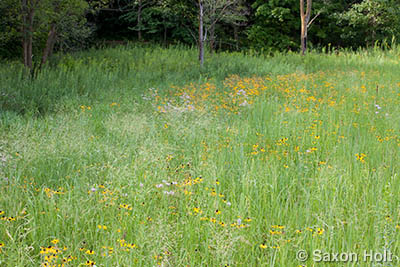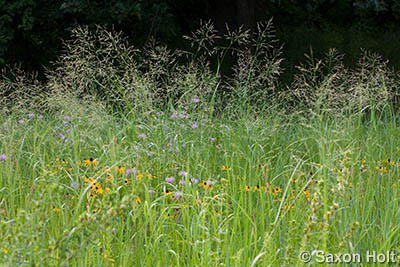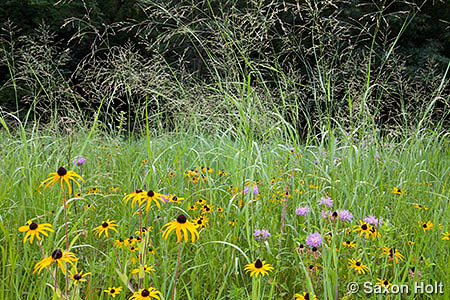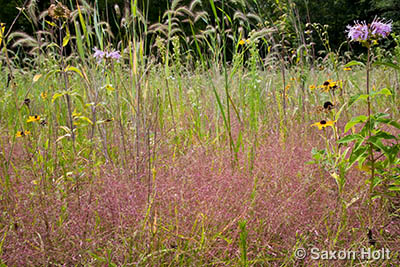Just back from Minnesota where I was shooting for a new book with fellow Lawn Reform Coalition member Evelyn Hadden, and spent my free time looking for prairies. OMG! OMG, O-M-G . . .
The Crow-Hassan Park Reserve is part of Three Rivers Park District, a regional park for the Minneapolis area. I did not expect to find beautiful wild prairie so close to the city, I was completely prepared to drive hours into the wild. The reality of native prairie though, is that there are no big expanses of prairies left, so you are just as likely to find a small remnant near a city as you are next to a cornfield in the middle of nowhere.
I look for prairies and glades and meadows whenever I travel, always on the lookout for garden ideas that are natural and sustainable. This first photo I took, in a clearing with willows, sumac, and goldenrod ready to bloom could be a garden scene in any northern clime, and I began to realize I had stumbled on a very special place.
I have attached a web gallery of Crow-Hassan at the end of this post and will not here keep gushing about finding a prairie at peak bloom. Instead I will go through a photo process of photographing grasses in the wild.
Grasses are the key component of any prairie or meadow, and knit together the ecosystem. But they can be hard to photograph. They are wispy and almost invisible until they begin to flower, and even then they do not scream out in the landscape.
This is a wonderful part of the Crow-Hassan Preserve where the prairie comes up against the woodlands. Wonderful not just because there are more diverse plants or because can get more ideas for home gardening (imagine the woods as a house) but wonderful because the woods provide a dark background.
The mass of Switch Grass is just beginning to flower in the left of the photograph but is lost in the scene. My job was to picture the grasses so they could stand out in the landscape. Grasses are the key element in all my meadow garden photos so I need to make them look good – the camera always lies ya know.
The best way to get any plant to stand out, is to isolate it somehow from its surroundings. In this case, the dark woods provided a nice foil for the tall flowers. So I got down low in the grass and used a wide lens to show the whole scene of Rudbeckia, Monarda, and Panicum together in front of the woods. Nice; we get a sense of scale and the grass now has some presence but it doesn’t really seem like a garden scene. I want to get more color and drama.
Now I use a longer lens, compress the Black-eye Susan and Bee-balm, stay low in the grass, use more of the dark woods and compose the photograph so that there is no wasted space. Notice how the negative space around the grass flowers is nicely balanced with the color of the prairie flowers. It just seems to work.
I was lucky that it was a still morning, with almost no wind so that I could set up my tripod and get good depth of field. And of course the tripod allows careful composition so I could consider how to use the whole frame.
Sometimes though, it can be really tough to use the tripod. Full sized tripods are not built to get really, really low. But that is what I needed to do to photograph the short Purple Love Grass* under the taller rye at another part of the prairie. I splayed the tripod legs completely open and laid on my belly to get this.
* In my original post I mistakenly identified this as a Muhly grass. Thanks to our watchful readers I am able to correct this Eragrostis spectabilis (purple love grass).
I then stayed in the grass, dreaming of meadows; a prairie delight.





